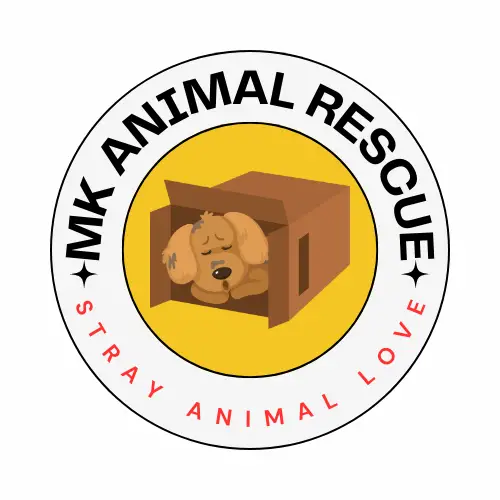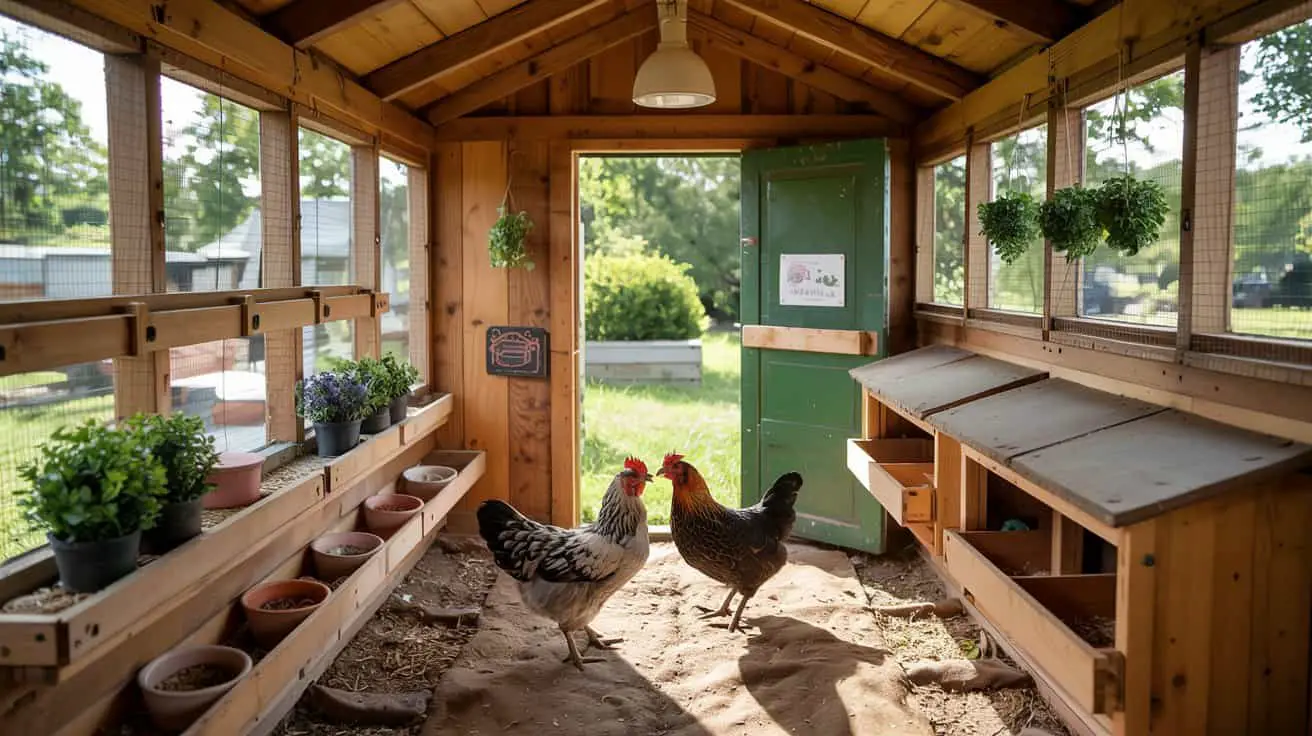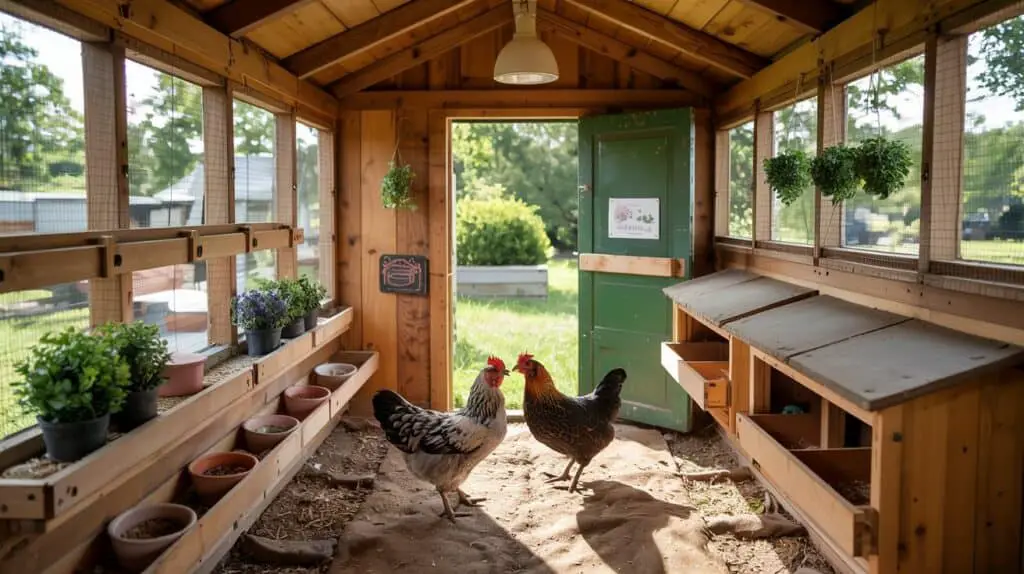
When we built our first chicken coop, I focused so much on the outside—paint colours, roof angles, predator-proofing the run—that I barely thought about what was going on inside. Big mistake. Because let me tell you, a messy or badly laid-out coop is no fun when it’s raining, dark, and you’re in your dressing gown trying to collect eggs before the school run.
Whether you’re planning a big walk-in coop or converting an old shed, the inside layout is where the magic (and the mess) happens. So it’s worth slowing down and making sure it’s designed to work—for you, for your chickens, and for your garden setup too.
Start with the Essentials: Nesting Boxes and Roosts
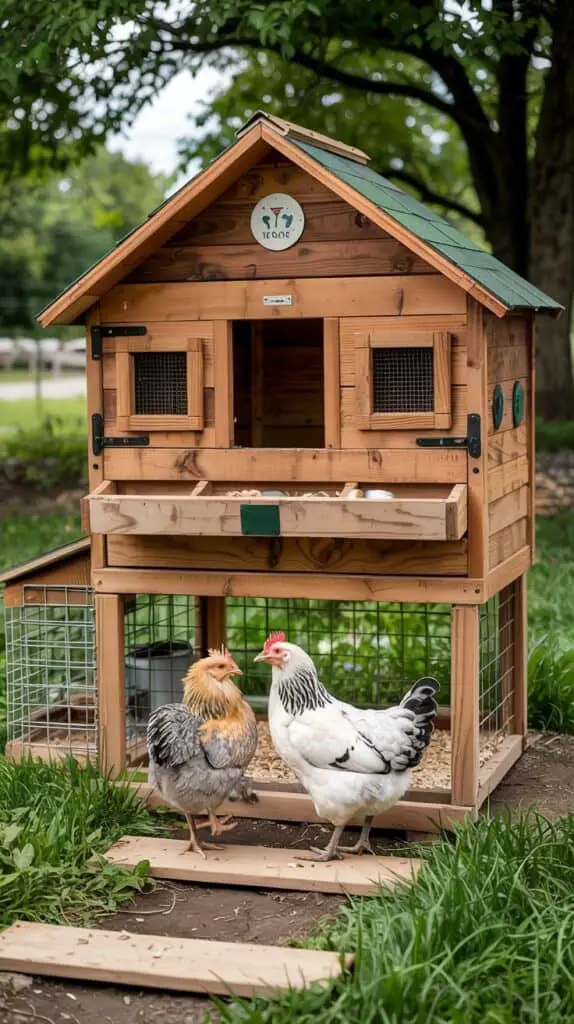
The two things every chicken coop interior needs: a spot to sleep, and a spot to lay. Nesting boxes can be as simple as plastic bins or as fancy as built-in cubbies—but the key is to place them lower than the roosts (chickens like to sleep high and lay low).
For most backyard flocks, 1 nesting box per 3–4 hens is plenty. You can mount them on the wall with a little lip to keep bedding in, or use stackable crates tucked in a corner.
Roosts should be made from rounded wood about 2–4 inches wide, and they need to be high enough off the floor to keep hens happy but low enough you’re not using a ladder to clean. Plan for at least 8–10 inches of roosting space per bird, and leave space below to catch droppings or slide in a poop tray (game changer for cleaning).
Think Through the Flow (and Your Daily Chores)
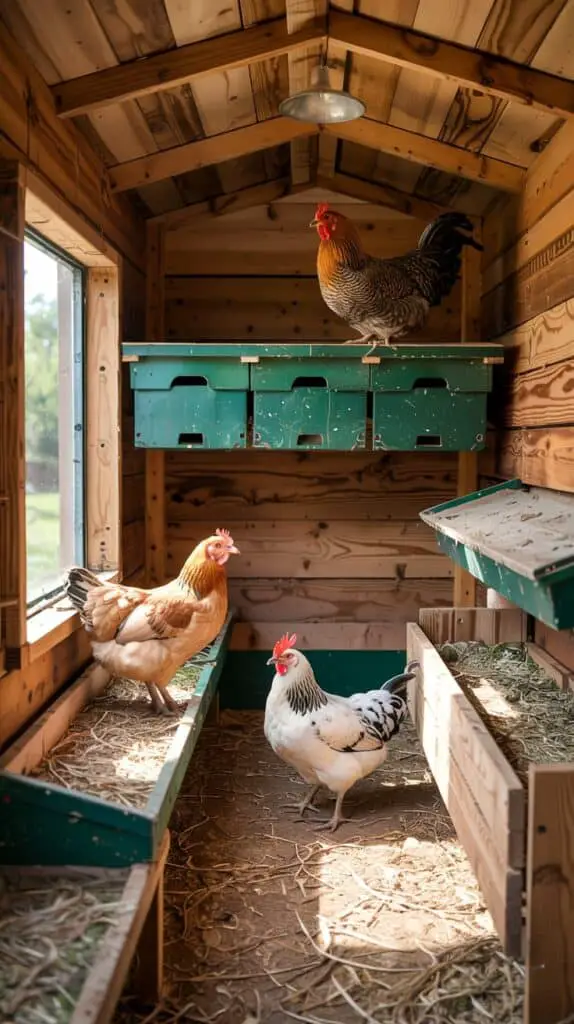
Before you start building, walk through the coop in your mind like it’s a little routine. Where do you collect eggs? Where do you refill food and water? Where do you clean out bedding?
Try to place the nesting boxes on the side of the coop that’s closest to your usual path—so you don’t have to trek around the run every morning. Feeders and waterers should go in an area with good clearance and no bedding buildup.
If it’s a walk-in chicken coop, leave space to turn around, set down a bucket, or let a curious toddler follow you in (because they will). Storage shelves or hooks for hanging tools, scoop buckets, or spare feed bags can save loads of time and trips back to the shed.
Keep It Dry, Bright, and Easy to Clean
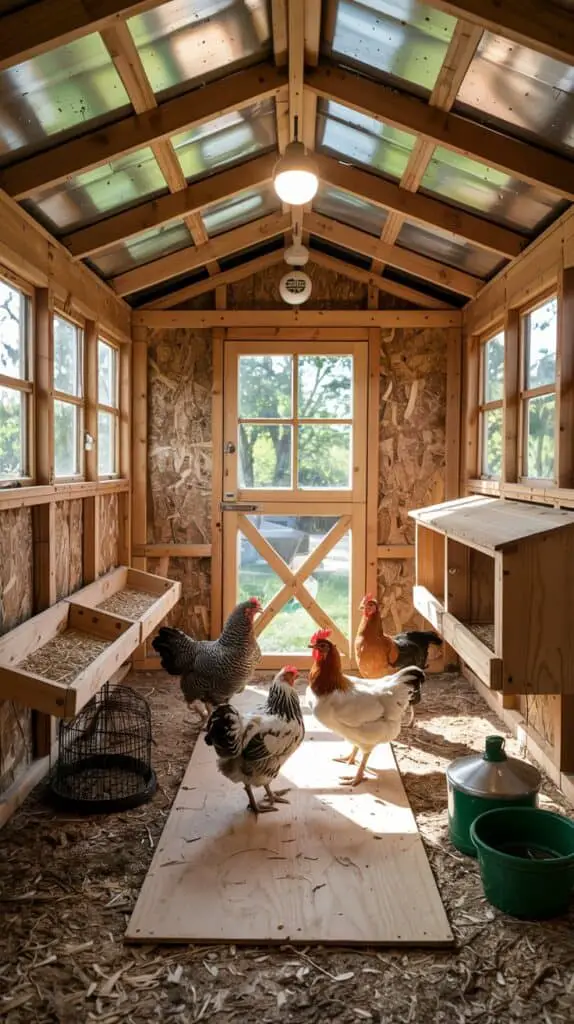
Inside coop design isn’t just about where to put things—it’s about making sure the whole space stays healthy and clean. Start with flooring: plywood covered with linoleum, vinyl sheet, or even a sand base is easy to sweep and wipe down. Deep litter bedding (like pine shavings or straw) helps soak up moisture and control smell, but it needs airflow.
Windows and vents should go near the top of the coop to keep air moving without creating a cold draft right where the chickens roost. Natural light also encourages better egg laying, so if you’re converting a shed, consider adding a clear panel or simple window to brighten things up.
Doors and hatches should open easily (even when you’re holding a feeder or a sleepy hen). And don’t forget to make everything accessible—you want to encourage egg collection and cleaning, not make it a puzzle every time.
Add a Few Comforts (and Some Personality)
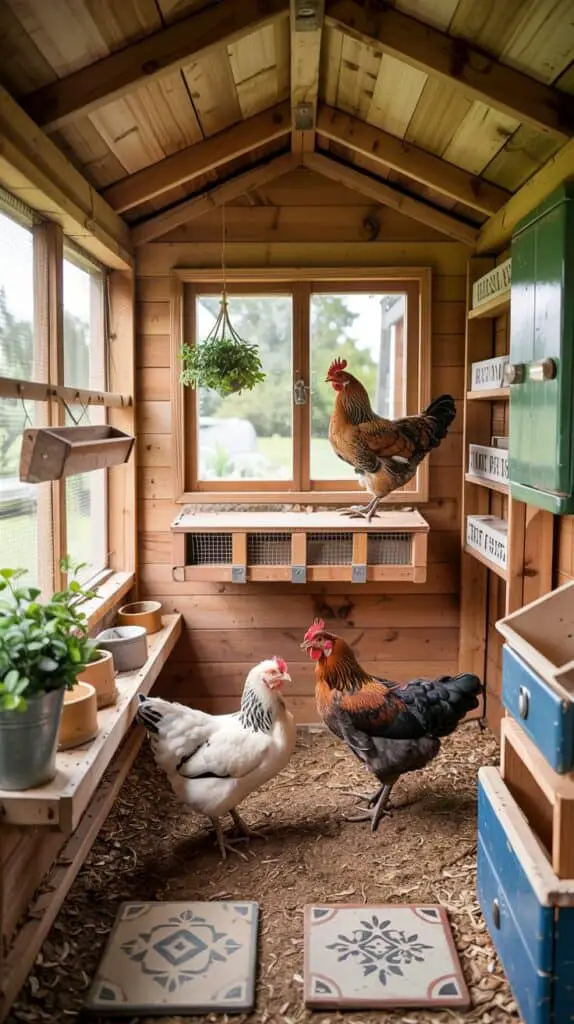
Yes, it’s a coop—but that doesn’t mean it can’t be a bit lovely too. Hang a small herb bundle to freshen the air. Use cute stencils or signs to label the nesting boxes. Add a perch by the window so your hens can do some people-watching.
If you’ve got kids helping out, make a low shelf with labeled containers for scratch, grit, or egg baskets. And if you’re really feeling crafty, line one corner with leftover tiles or old laminate boards to make cleaning easier and give it that “shed-chic” look.
Inside chicken coop designs don’t have to be complicated—but when the layout makes sense, everything gets easier. Your hens will be happier, you’ll save time and effort, and the whole space will feel more like a little extension of your garden—not just a box full of birds.
